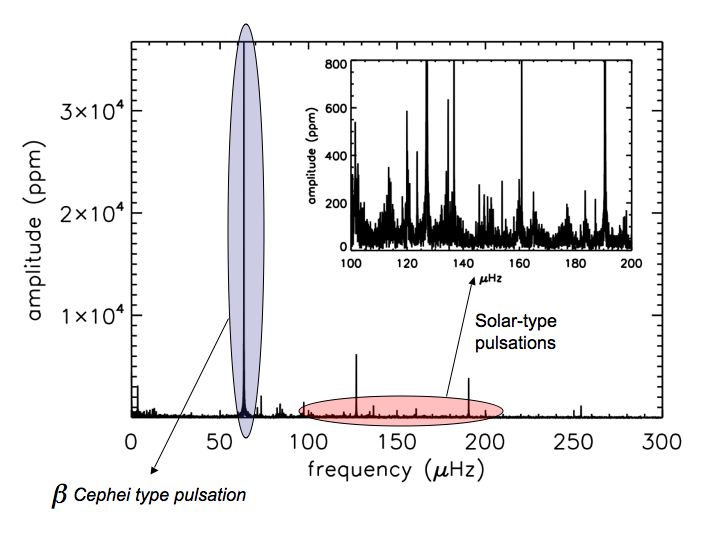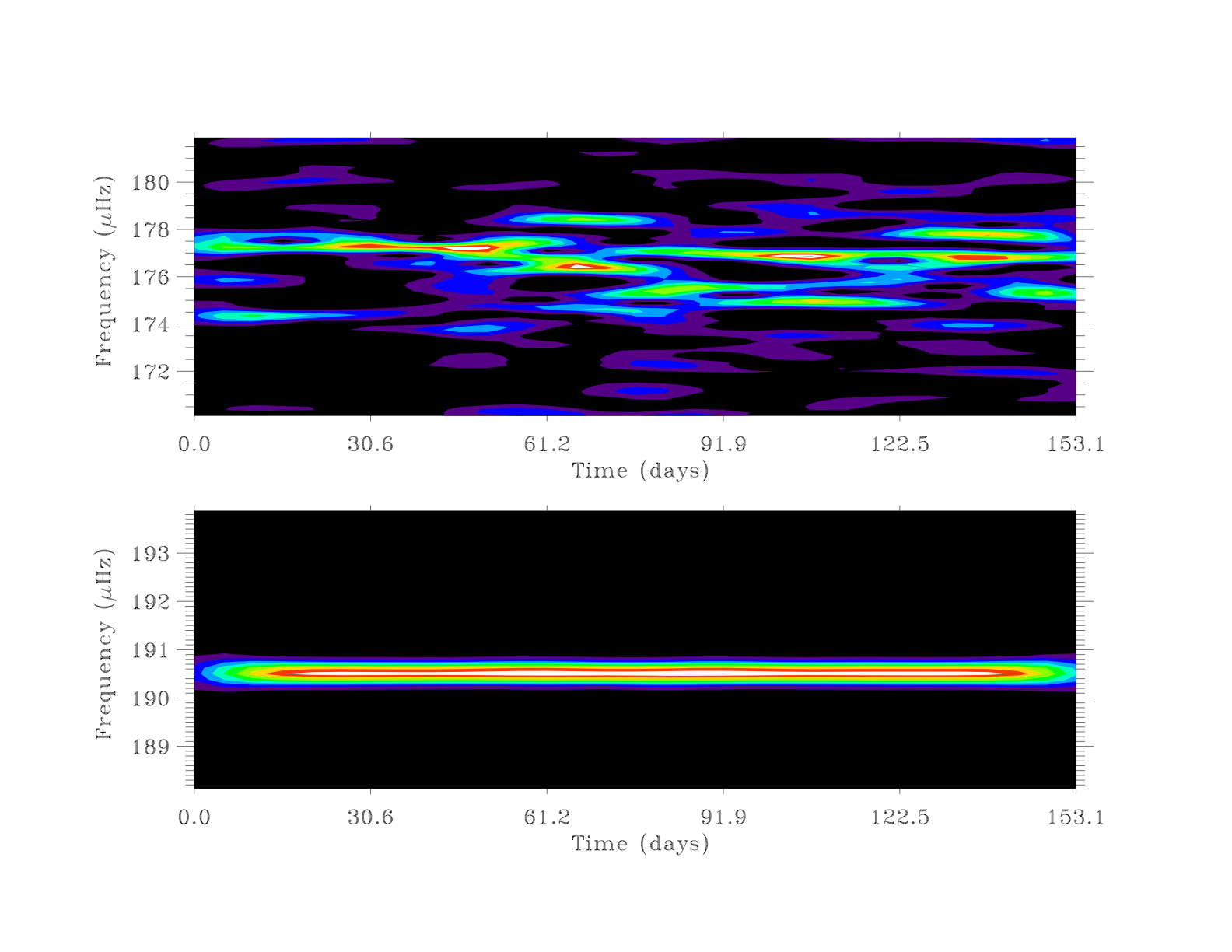Stellar seismology
Stars are physical systems which are described using a wide range of physical processes on spatial scales ranging from the microscopic to macroscopic and temporal scales ranging from minutes to millions of years. The extreme conditions found in these objects make them a unique laboratory with no earthly equivalent. The evolution of a star depends primarily on the mass, but also on the numerous physical processes that occur inside the star during the main sequence (i.e. during the core hydrogen burning phase). For instance, the transport of chemical elements determines the size of the helium core and the evolution of the star during the post-main sequence phase. The transport processes, such as turbulence or those induced by rotation, are currently not well understood and are poorly modeled. Valuable constraints on these physical processes can be obtained through analysis of stellar oscillations. Indeed, information on the internal structure of stars can be determined by analyzing the seismic waves that propagate in their interiors. This is like analyzing the sound of a violin and from that determining how the body of the violin resonates and how the bow stimulates it.

Figure 1 : Fourier spectrum of the star V1449 Aql (HD180642) observed continuously by CoRoT for about 150 days. The mode with large amplitude ( 40 000 parts per million [ppm]) and low frequency (63.5 µHz) corresponds to a mode self-excited by the thermal instability (“Kappa” mechanism). The solar-like oscillations discovered in this star are seen in the frequency domain between 100 µHz and 250 µHz. These oscillations can be distinguished from the low frequency modes by their low amplitudes ( 100 ppm) and larger linewidths (in other words by their shorter lifetimes). Their amplitudes are well above the instrumental noise (few ppm).
High amplitude pulsations, self-excited by a thermal instability related to the behavior of the opacity with respect to temperature (the “Kappa”-mechanism), have been known for many years and have been detected in a variety of stars. On the other hand, low amplitude oscillations, stochastically (randomly) excited by turbulent convection were first detected in the Sun 40 years ago, and even more recently in analogous stars. These solar-like oscillations have never been detected, or even suspected, in a massive main sequence star. Thanks to the unprecedented precision of the CoRoT data, we are able to announce the detection of solar-like oscillations in the massive star V1449 Aql (HD180642). This star was previously identified as Beta Cephei type star showing classical pulsations of the “Kappa” type. This is the first star that pulsates both as massive star and as a solar-type star, as illustrated in Figure 1. These solar-like oscillations can be clearly distinguished from the low frequency modes by their low amplitudes (a few hundreds of parts per million [ppm]) and by their larger linewidths (in other words, by their shorter lifetime). In contrast with the “kappa” modes, these modes are excited by a turbulent and stochastic process acting on a relatively short timescale. The temporal behavior of both types of modes is very different from each other, as shown by the time-frequency analysis in Figure 2. The excitation of solar-like oscillations detected in this star is expected to be due to turbulent convection, as for the Sun. However, the detected amplitudes are two orders of magnitude larger than those of the solar modes. The excitation of these solar-like oscillations is expected to occur in a deeper and denser region than the one where the excitation of the solar modes occurs. The turbulent elements that are at the origin of the excitation carry a larger kinetic energy than those at the origin of the excitation of the solar modes.

Figure 2 : Time-frequency analysis of two oscillatory modes. Top panel : a solar-like mode. Bottom panel : second harmonic of the fundamental « kappa  » mode detected at 63.5 µHz. Click on the image to enlarge it.(*) The CoRoT space mission, launched on 27 December 2006, has been developed and is operated by CNES, with the contribution of Austria, Belgium, Brazil, the European Space Agency (ESA) (Research and Scientific Support Department and Science Programme), Germany, and Spain. "English traduction by C. Lovekin"
